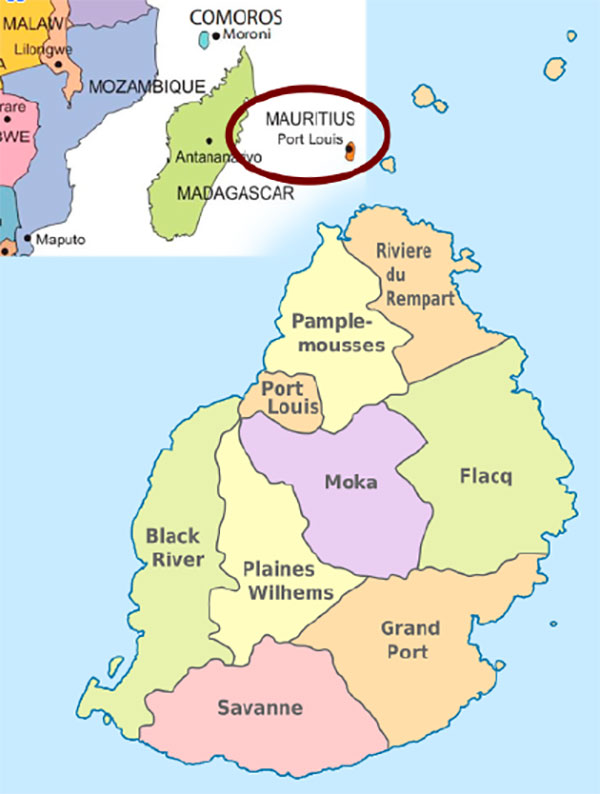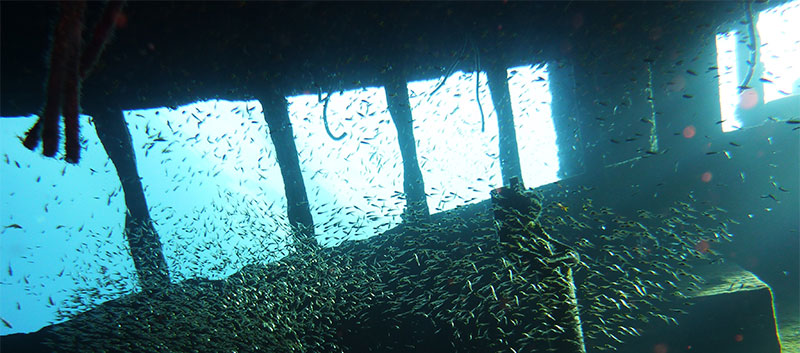
In our series, Island LIFE, Janet-Lynn Vorster, takes us 2,000 kilometres (1,243 mi) east of the South African coast to the tropical Indian Ocean island of Mauritius.
She tells us about some of the many shipwrecks scattered around the island; locating, identifying and diving the wrecks; pirates in the Mauritian waters, and their history of slaves, whiskey and brawls.
Table of Contents
Mauritius Wreck Diving
Officially known as the Republic of Mauritius, named after Dutch Prince Maurice of Nassau, Mauritius is an African island located in the Indian Ocean about 2,300 kilometres (1,430 mi) off the southeast coast of Africa.
Mauritius includes many tiny islets scattered around the coast, as well as Rodrigues and the outer islands of Agaléga and St. Brandon. Mauritius and Rodrigues form part of the Mascarene Islands, along with nearby Réunion, a fellow member of the Indian Ocean Commission (IOC).
Since as early as the 17th century Mauritius’ coasts has become the burial place of many ships and boats.
The entire history of civilisation in Mauritius is written in shipwrecks. Many still lie undiscovered at the bottom of the ocean.
The first people ever to set foot on Mauritian shores arrived by ship.
Even the first plane to fly over Mauritius reached the island by ship. The first flight to Mauritius was only in 1933, and was from Reunion Island, 120 kilometres (75 mi) west of Mauritius.
To better understand the shipwrecks of Mauritius, I met up with Yann von Arnim at his home in Curepipe. Yann is President of the Historical Society of Mauritius, board member of the Mauritius Museums Council, vice-president of the Mauritius Marine Conservation Society and president of the Scientific & Archaeological Commission of the Mauritian Scuba Diving Association.
About Yann von Arnim
Yann grew up in Germany. He started spearfishing from the age of 10. When he was 12 years old, he found a Roman shipwreck in the south of Corsica. He found what he thought were flower pots, but they proved to be a cargo of Roman amphora.
⛵
In later years, Yann came to Mauritius and went scuba diving with a friend. He realised that his passion was not only for shipwrecks, but for maritime archaeology and oceanography too. Today he is well-recognised world-wide for his archaeological work.
⛵
With over 30 years of work behind him, Yann wants to complete his life’s work with a comprehensive database of the underwater heritage of Mauritius. This database will indicate which wrecks will be most interesting to study in the future, with reference to archive documents and old newspapers.
⛵
The construction and history of each ship must be categorised too, so that they can be compared and studied. Each ship should have a reference as to where it is resting, who located each ship, what artefacts were retrieved, who donated the artefacts, and to which museums they were donated.
⛵
Yann is mostly interested these days in the scientific issues around the shipwrecks. There are two kinds of interesting shipwrecks, according to Yann: those with interesting cargo and treasures on board, and those with interesting stories.
There are two kinds of interesting shipwrecks, according to Yann: those with interesting cargo and treasures on board, and those with interesting stories.
Shipwrecks and treasure are synonymous. While over 800 ships lie scattered around the island, most of the cargo has long since been retrieved.
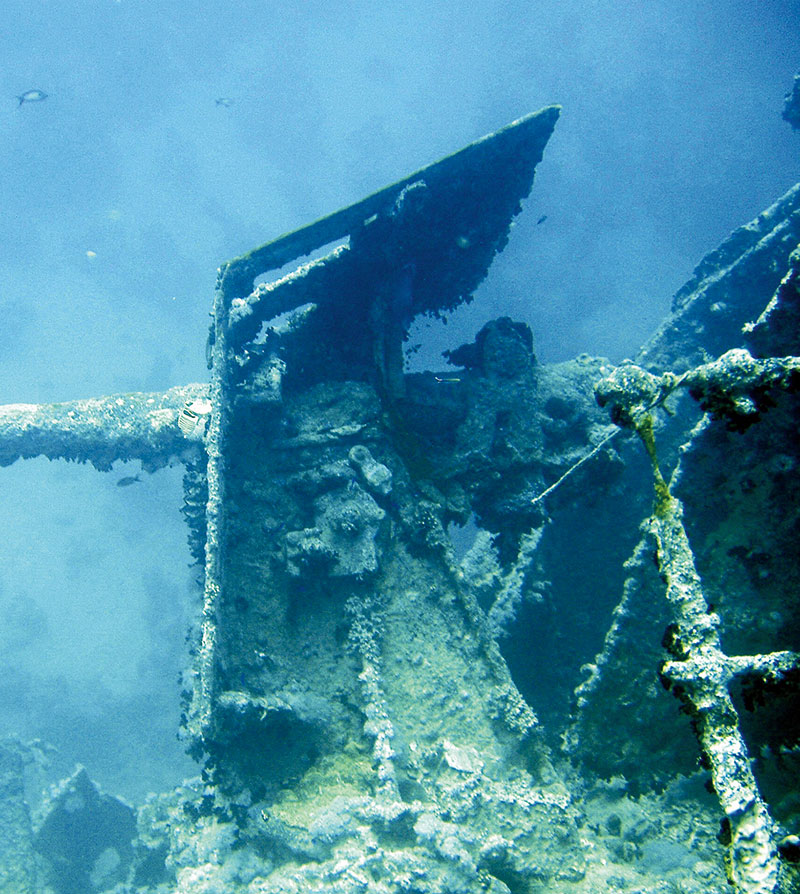
Earliest Shipwrecks
According to my research, the first ships arrived in Mauritius during the 10th century, bringing Phoenicians, Malays, Swahili and Arab seamen who visited but did not settle. The island was originally named Dina Harobi by Arab mariners.
Yann confirms this early discovery, indicating that the Chinese and Arabs knew about Mauritius long before the 15th century, as deduced from ancient maps.
In 1498, Portuguese explorers stumbled upon Mauritius in the wake of Vasco da Gama’s voyage around South Africa’s Cape of Good Hope. In 1510, the Portuguese navigator Dom Pedro Mascarenhas visited the island and named it Ihla do Cirné. It was used as a port of call en route to India for supplies and repairs. However, they did not establish a permanent settlement.
In 1598 the Dutch claimed the uninhabited island and renamed it Mauritius in honour of Prince Maurice van Nassau, head of the Dutch Republic. The Dutch were thus the first to settle in Mauritius. They exploited the ebony wood and planted sugar cane. It was a hard life, and they soon relocated to South Africa.
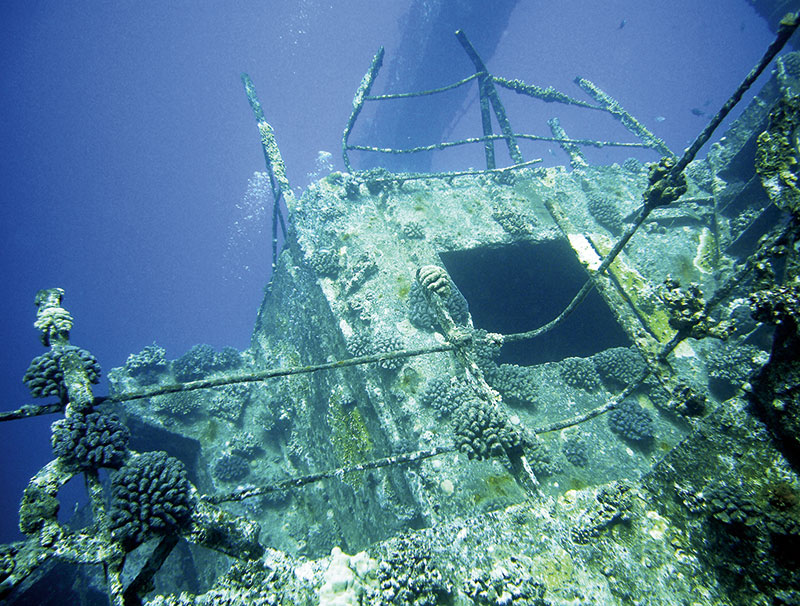
In 1615, on a return journey to Holland from the East Indies, Admiral Pieter Both and his fleet ran into trouble during a violent storm while anchored off Port Louis. Three of the four boats sank: “Banda”, “Geunieerde Provincien” and “Gelderland”. Admiral Pieter Both died in the storm. Only one of the four ships, the “Delft”, sailed back to Holland.
These were the first shipwrecks where human remains were found, making them significant for both archaeological research and their story. Their spices were claimed by the ocean, but the porcelain can be seen in the Naval Museum in Mahebourg.
These wrecks were found due to small green marks on the “secret maps” of the Dutch East India Company indicating their location. The guns found at these wrecks were those of Pieter Both, confirming the identities of the wrecks. Many think the as-yet-undiscovered third wreck went down with diamonds on board, but the diamonds were on the “Delft” which arrived back safely in Holland.
A mountain in Mauritius, a notable landmark, was named after Pieter Both.
In 1638, another Dutch settlement began but soon failed again. By 1710 a third attempt at Dutch colonisation had also failed and the Dutch withdrew permanently.
Yann explains how it was common practice around the world for people to leave a light burning on shore. Destitute ships and sailors would come towards the light for help. They were subsequently killed, and their ships plundered. However, this apparently did not happen much in Mauritius.
Sadly, the dodo, a small turkey-like bird found only in Mauritius, became extinct sometime between 1688 and 1715.
Pirates in Mauritian Waters
My favourite pirate story is that of John Bowen.
In 1702 after a violent ruckus on board, the pirate ship “Speaker” sank near Ile aux Cerf, carrying cannons and treasure stolen from Arab merchant ships. The first pirate treasure ever found came from this pirate ship. The wreck lies on a reef 2400m from shore, so anything not yet retrieved now lies scattered and probably deeply buried over a large area.
John Bowen, a ridiculously wealthy pirate, proved to be a generous pirate. He shared the treasure retrieved from the ship between all 130 of the pirates. These pirates knew how to fight, and the locals didn’t.

Outnumbered by the pirates, locals were very hospitable towards them. I would also have been. The locals invited these pirates to dine with them and tried to poison their food. However, the wily pirates cottoned on to this ploy and were not so easily fooled.
In the end, after a few large bribes, the Dutch governor befriended the pirates and allowed them to buy a sloop, a single mast sailing boat, which they converted into a brigantine, a two-masted boat. They left the island on good terms.
All is Fair in Love and War
In 1715 the French East India Company claimed Mauritius, renaming it Isle de France. They settled down and imported slaves. Port Louis was built and transformed into a well-defended naval base with a state-of-the-art naval workshop.
In 1744 “Saint Géran” sank on the northeast coast. A small monument at Poudre d’Or marks the spot of this tragedy. This shipwreck has left traces in literature. The story of Paul et Virginie is the “Romeo and Juliet” of shipwrecks. The “Saint Géran” was carrying silver coins, slaves and equipment for one of the sugar mills. The ship’s bell was found among the remnants and is now displayed in the Naval Museum of Mahebourg.
The National History Museum (Naval Museum) in Mahebourg showcases the entire history of Mauritius including many shipwreck artefacts.
⚔️
Blue Penny Museum at the waterfront in Port Louis is mostly dedicated to “Paul and Virginie” but well worth a visit.
⚔️
Do not forget to visit the monument erected for Paul and Virginie in Poudre D’or.
Paul, awaiting the return of his beloved Virginie, was witness to the ship in distress from the shore. Paul braved the ocean and swam to save his beloved who, modest and chaste, refused to remove her clothes. Her waterlogged Victorian attire dragged her down and she drowned. Divers found a ring which is believed to have belonged to Virginie.
Of the 220 people on board, only eight survived. Most survived the shipwreck but drowned as they tried to swim against the strong current to reach the shore.
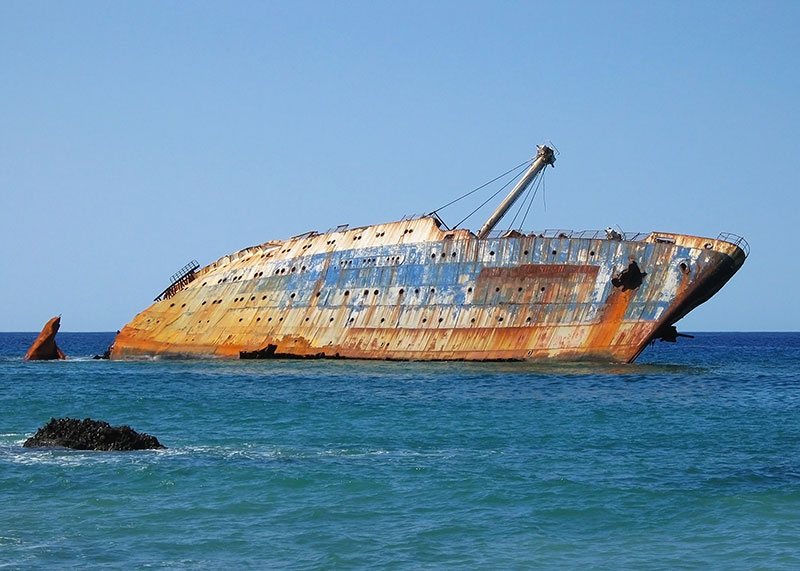
The book by Bernardin de Saint-Pierre, first published in 1788, tells that Paul later died of a broken heart.
By the early 1800s, Great Britain had its eyes set on capturing the island due to its strategic position.
A famous naval battle ensued—the only naval battle won by Napoleon. The Battle of Grand Port was fought in August 1810 between squadrons of frigates from the French Navy and the British Royal Navy over possession of the harbour of Grand Port. The British lost. It was the greatest naval defeat ever suffered by the Royal Navy during the entire war.
Humiliated and upset, the British ambushed the island four months later, in November 1810, sneaking in with ships and soldiers from behind the islands in the north. They attacked, and the French were defeated in battle at Cap Malheureux. The British forces claimed Mauritius.
Slaves, Whiskey and Brawls
By the early 1800s, ships were so large that they often ended up close to shore when they hit the reef, carried by the sheer momentum of the weighty vessels. Accessible shipwrecks were used to repair other ships, so the keel and ballast are probably all that remain of most shipwrecks.
In March 1821 “Le Coureur” crashed into the reefs. It had been waiting offshore to deliver a cargo of slaves to French colonists residing in the British colony of Mauritius. However, the ship’s voyage was being tracked by the British navy who dispatched a schooner to patrol the eastern shores of Mauritius. “Le Coureur” was spotted, and drama ensued. Was the rough sea to blame, or was it panic at the sight of the pursuing British schooner?
The slaves disembarked and the ship was set ablaze to destroy any evidence. It is unknown whether any lives were lost in this shipwreck. “Le Coureur” lay undiscovered and unexplored for almost two centuries.
Yann and one of his diver friends found “Le Coureur” by accident, even though he had been searching for many years. He has been studying the wreck for the past 12 years.
In 1882 the Iron Screw Steamer “Clan Campbell” hit the reef in the south of Mauritius near the village Baie du Cap. A few on board died, but most were unharmed. Part of the cargo was whiskey. Locals found the bottles and not familiar with whiskey, it was a real treat for them. They did not want the government to confiscate it, so they buried the bottles. You might still discover some today while building sand castles on the beach.

Fast forward to 2016, when the “Benita” ran aground on the rocky shore of Mauritius en route from Singapore to Port Elizabeth in South Africa. A brawl broke out on board, and the chief engineer took refuge in the escape chamber. The only way he could communicate with the captain was to shut down the engine, so the ship drifted. The ship had no cargo and was riding high at high tide, so it lodged firmly on the rocks. It took three tugboats to pull it free. It finally sank off Mauritius while being towed to India to be scrapped.
In more recent times some ships wrecked as they came dangerously close to shore to make use of terrestrial internet connection which is less expensive than satellite communication.
Locating and Identifying the Wrecks
Shipwrecks deteriorate over the years and are often buried under sand or coral. The only sure way to identify a wreck is to locate its cannons. Anchors are not good indicators, as they often snagged or were cut loose.
Stone cannon balls indicate wrecks from the 15th and 16th centuries, while iron cannon balls hail from the 17th and 18th centuries.
Ships are obliged to leave the harbour ahead of a cyclone. However, in bygone days it was difficult to predict cyclones, and many ships were caught off guard and sank while still at anchor in the harbour, or broke anchor and ended up being smashed on the reefs close by.
Cyclones displace wrecks from their original resting places, so they are often not found where expected. During cyclones, there is first a developing depression over the ocean, and then an immediate surge and a rise of a metre or more, lifting ships up and over the reef, especially during high spring tides. The difficulty when diving and searching for them is not the depth, but the churning just below the waves where it is like being in a washing machine. Many shipwrecks have not been found because of this. When shipwrecks end up near a river mouth, the muddy water coming into the sea causes bad visibility, making it both difficult and dangerous to find them.
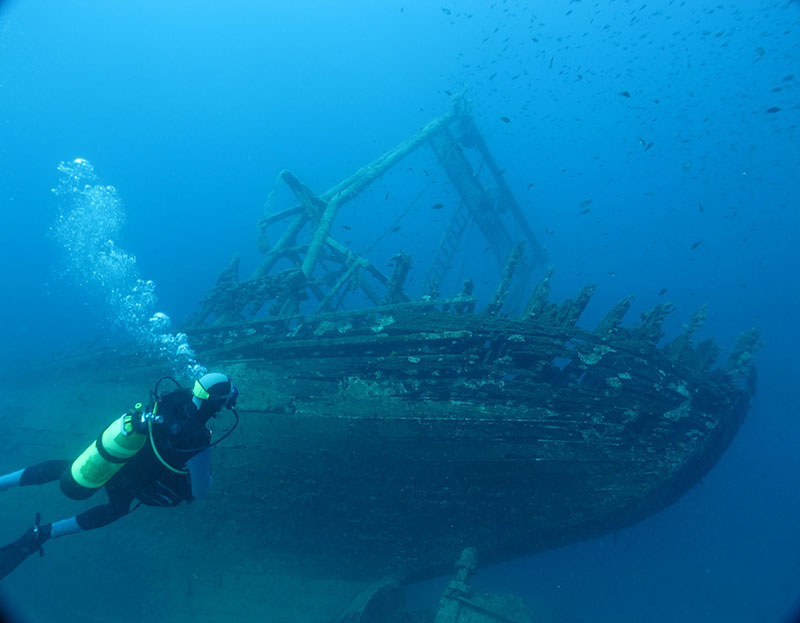
Shipwrecks off the east coast have hardly been touched as the sea is rough in the east and only accessible a few days per year.
Today many homes in Mauritius still own artefacts and furniture recovered from shipwrecks. Rosewood is still being found in one of the shipwrecks and remains usable for furniture manufacturing after all these years.
Wreck Diving
Scuba diving only started in the 1960s, so many shipwrecks were not discovered or investigated before then. The government does not want to punish people for goods removed from shipwrecks in the past, so, encouraged by this, artefacts are slowly finding their way to the museums as people donate them without fear of being prosecuted. It has proven difficult though to know which artefacts came from which ship.
If shipwrecks do not yield new information, there is no reason to excavate them. Wrecks from all eras have already been found, so the focus now is not on searching for more wrecks but rather on researching existing discoveries extensively.
Yann has full government backup to do archaeological work on certain shipwrecks and is currently searching for ships related to slavery and indented labour from India. Finding the ship’s log books in archives is crucial. When the captain leaves a ship, he takes his navigation instrument and log book with him. This makes ships more difficult to identify as well.
Diving Sites
Many of the dive centres offer wreck dives. Few will allow you anywhere near the very old shipwrecks though, as they are protected and dangerous, but will take you to those that form the artificial reefs. Dive centres are mostly located from Flic en Flac on the west coast up to Cap Malheureux in the north.
The Inhumane Aspect of Shipwrecks
Yann says their youngest shipwreck was an old German adventurer sailing around the world in a yacht. He got caught in a storm near Port Elizabeth in South Africa and damaged his boat. Slightly lost, he knew the general direction, so he continued sailing. He went off course, and in the middle of the night ran onto the rocks to the south of Mauritius near le Souffleur.
The coast guard and the police were not very helpful, and instead of helping him they arrested him and threw him in jail.
Yann reckons the world is “upside down” with officials putting an old shipwrecked man in jail rather than helping him. Officials said he was polluting the coast and entered Mauritius illegally. Empathy is sadly missing in cases like this.
Apparently right up to the 19th century, people were very helpful towards shipwrecked sailors. In bygone days, ships ran into trouble or came to shore when the crew on board got sick, as they often did from being at sea for so long. Sailors were prone to scurvy and dysentery. Exposure to the elements, poor hygiene, contagious diseases, starvation and dehydration took their toll. Alcoholism was rife, so many sailors were not in a fit state to stand, never mind sail a ship! Sometimes, only the captain or one of the crew could navigate. Cases of sailors being thrown into jail then were unheard of. In fact, locals were often so helpful that they were accused of being too humanitarian, nursing sick or wounded sailors themselves instead of putting them into quarantine.
Artificial Reefs
Degradation of coral reefs is one of the most pressing environmental issues.
Ships are deliberately immersed to form artificial reefs. The creation of artificial reefs in Mauritius was initiated by the Mauritius Marine Conservation Society and dates back to 1981 with the immersion of two barges off Trou-aux-Biches. Many more have since become the new habitat of underwater fauna and flora. They make exciting diving sites.
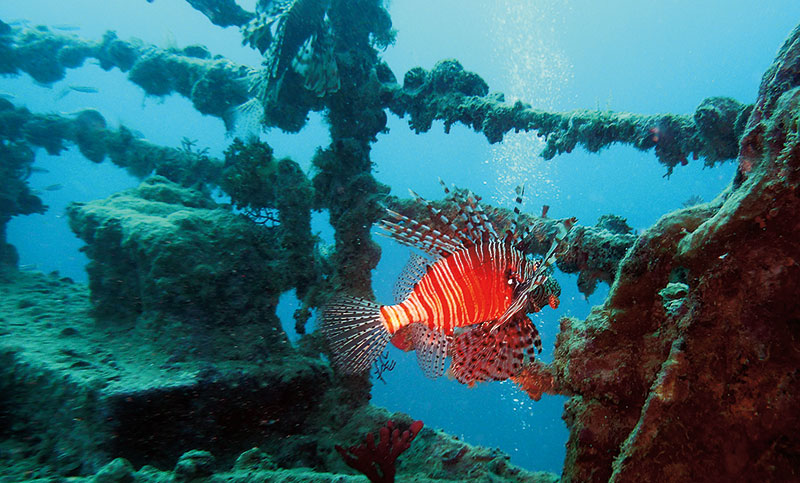
☛ Read more: Mauritius island: Gardens, tea, sugar, dolphins, and shipwrecks
☛ Read more: Mauritius island: Districts, beaches, islets, and shopping

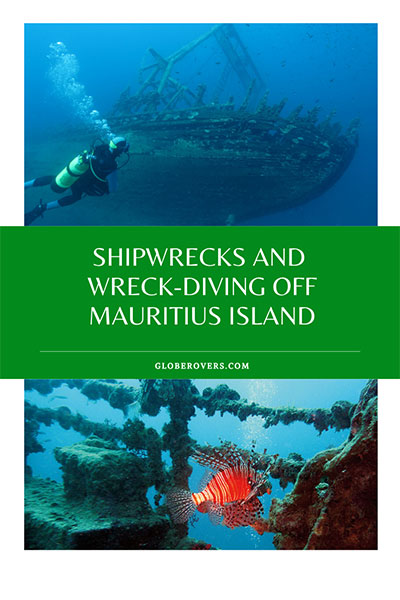

Janet-Lynn is a numerologist by profession, and journalist, editor and photographer by hobby. She is the proud mother of three grown children and granny to three grandchildren.

